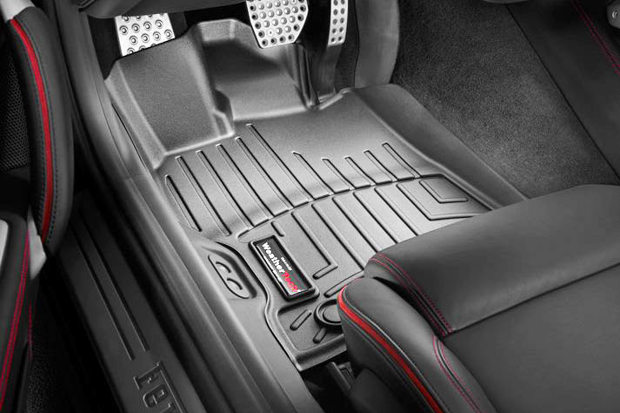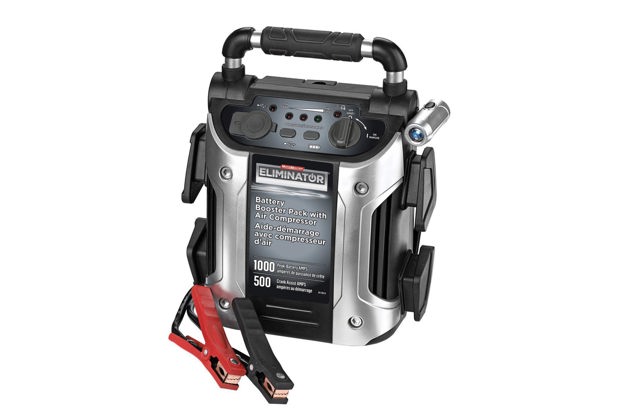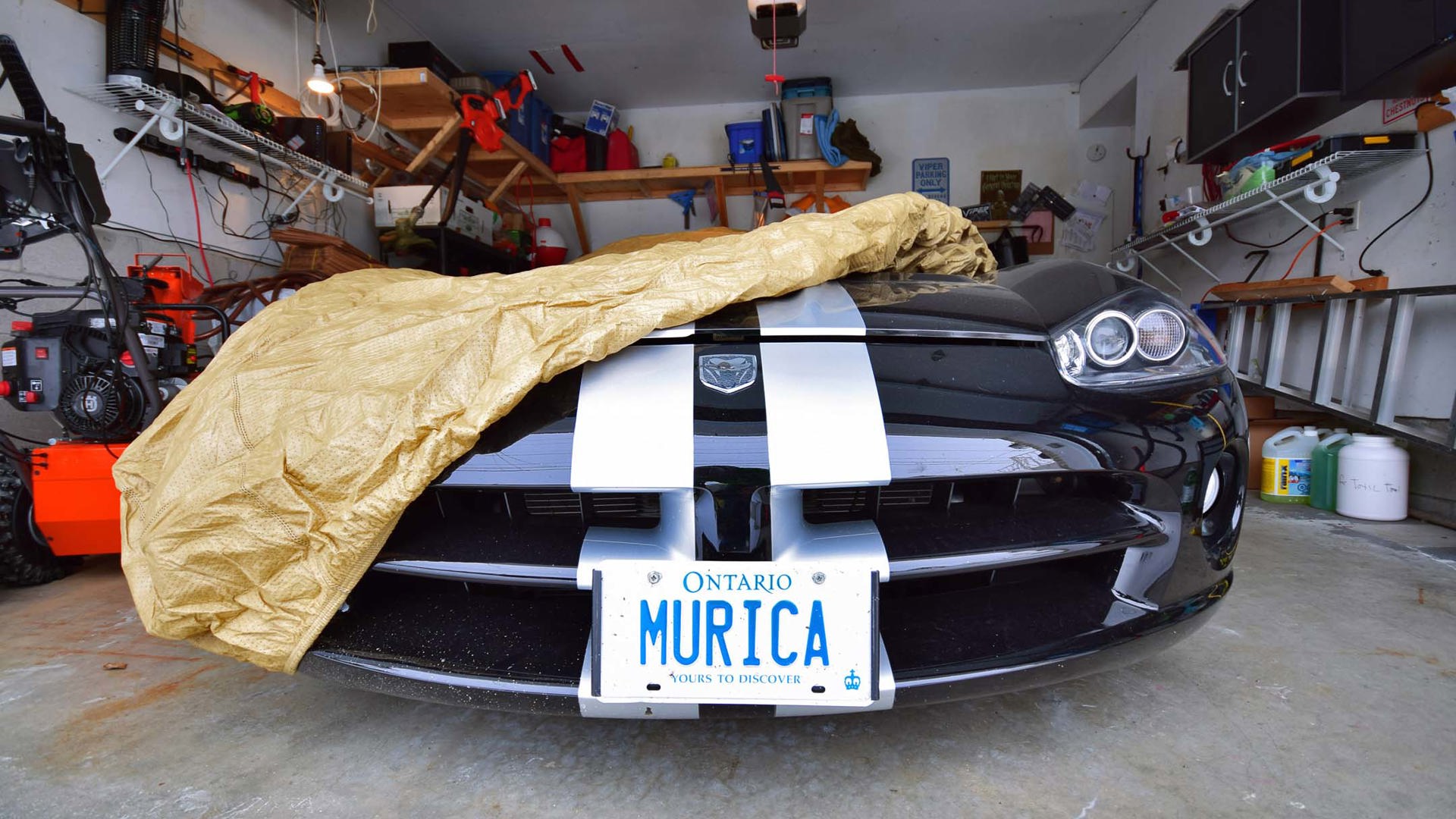A reader email arrived the other week from one Mr. Ewing, of Dartmouth, NS. He was after some advice on which products he might want to consider buying, in anticipation of the arrival of a brand-spanking-new Nissan Maxima which he’d recently ordered.
“I’ve been debating pulling the trigger on this car for a few years now,” he said. “Finally decided to go for it. I’ve owned Maximas in the past, and I’m in a Fusion now, but it’s getting old. The wife and I will use the new Maxima for a lot of road trips, as we’re both retiring this summer. What are some good products and accessories to consider for our new baby?”
The Ewings remind me of myself when I buy a new camera. This happens infrequently, and typically, after a year or so of research, self-debate, and hesitation. When it finally occurs, it’s a significant occasion typically marked by obtaining said camera (that’s the expensive part) and whatever currently-available new accessories will best help me enjoy, protect, care for, and better utilize it for the years ahead.
So, Mr. and Mrs. Ewing (and anyone in a similar boat), read on for a list of recommendations for enhanced enjoyment and pleasure of your new Maxima, for years to come.
Form-Fitting Floor Mats

Why:
Installing custom, form-fitting floor mats is one of the nicest things you can do for your ride’s interior. Many options are available in heavy-duty plastic or rubber, perfectly shaped to the unique contours of your vehicle footwells and floor. Unlike generic mats, these offer better protection and full coverage of the carpet and floor beneath, and should easily last the life of the vehicle.
Consider them especially if you’ll use your vehicle frequently with numerous passengers, or with pets, or in the dead of a Canadian winter where that corrosive mix of salt and sand and moisture will otherwise chew up the carpet and floor beneath.
Pro Tip:
Several brands offer form-fitting floor mats at various price points. If you’re a Costco member, check the website as they’ve got a good selection at a good price. Don’t forget to add rear-seat floor mats, and a cargo area / trunk mat as well, if you find the protection worth the cost. Installing a set of form-fitting mats from new adds protection for the long-haul and can improve your ride’s resale value.
Battery Trickle Charger

Why:
A battery trickle charger can be had for under $60, is easy to use, takes up little space in the garage, and can provide cheap insurance against a slew of frustrations. As batteries get older, they take longer to charge, hold less charge when they do, and can perform inconsistently. A weakened or dying battery can wreak havoc with modern vehicle electronics, and is a leading cause of annoying issues in many cars, from just a few years old.
Get yourself a cheap trickle charger, learn how to hook it up (this takes less than a minute), and use it whenever your vehicle won’t be driven for more than a few days. When attached and plugged in, the trickle charger tops your battery up, conditions it, improves its health, and may even prolong its useful life. It’s money well spent to avoid headaches, dead batteries, and the like.
Check YouTube, or your favourite online forum, for clever ideas on how to make hooking up and removing a trickle charger to your specific ride even easier and quicker.
Pro Tip:
In some vehicles, the battery may be located under a rear seat, or beneath a panel in the trunk. Still, you’ll likely have battery terminal connections located somewhere under the hood, even if the battery itself is elsewhere. If you’re confused, check your owner’s manual under the section on jump-starting: the battery hook-up points identified there are where you’ll likely need to attach the trickle charger terminals.
Soap-Free, No-Rinse Car Wash

Why:
A good friend of mine is a pro detailer, and suggested that I try Optimum No Rinse (ONR) a few years ago instead of washing my car with a hose, pail, soap, and sponge. I’ve been using it exclusively ever since, on both weekly review cars and my personal vehicles.
ONR is weird. It’s technically not soap, it doesn’t make any suds when agitated with water, and there are multiple ways to use it depending on how strongly it’s diluted. You can use it to clean your vehicle’s paint, glass, interior panelling, wheels, and more, all from the same pail.
There are plenty of videos and articles online about how to use ONR. The big appeal for your writer is the ability to wash a lightly dirty car in about three minutes, without touching a hose or pail. Further, ONR lets me do a full wash in my garage, on rainy days, with no hose, and while using less than two gallons of water.
Put simply, ONR lets you get a cleaner vehicle with less hassle and time, but you need to spend a little time learning how to use it properly. The soap-free formulation requires only a gentle touch and sort of “lubricates” particles off of your paint, helping your finish last longer. Use ONR to clean your new ride from the get-go, and your paint (and wallet) will thank you in the long haul. You know those little swirly scratches your paint collects over time? Most of those come from washing with regular soap and (specifically) a dirty sponge. Using ONR from day one can virtually eliminate these. It’s worth a look.
Pro Tip:
If you’ll wash your car using ONR from a pail, you just sponge the liquid on lightly, wipe gently with a special sponge, and then wipe dry with a microfiber towel, and that’s it. But, when you’re done, the remaining liquid in your wash pail has many uses – clean your glasses, wipe your dash and console down, clean your ride’s windows, and more. It also does a great job removing water stains on glass shower doors. Then, you can water your plants with it, since its non-toxic and soap-free.
Portable Power Pack

Why:
You never know when you’ll need a little extra juice to boost a dead battery, portable electronics, or other devices – especially if you’re travelling away from home. Check out your favourite automotive parts retailer for some options in a portable power pack: my favourite unit can be had on sale for less than $150, and holds enough juice in a built-in battery to jump start multiple engines and keep various electronics charged up on lengthy camping trips, and it’s got an integrated flashlight and air compressor for inflating tires too.
This is a handy device to keep in or near your car, and using it, rather than your vehicle’s battery to recharge on camping trips and the like will take the load off of your ride’s electrical system. A good portable power pack is one of the most useful things you can keep in your ride, and most fit perfectly on the rear seat floor, or in the trunk. Just make sure it’s secure: these devices can be fairly heavy, so you’ll want to keep it from sliding around.
Pro Tip:
Keep the power pack plugged into a household outlet in your house or garage whenever you’re not using it, and then bring it to the vehicle while you travel. Leaving a portable power pack like this in your car at all times is not advised, since prolonged exposure to a very hot (or cold) vehicle cabin can damage its on-board battery over time. Leave your power pack charging up at home and bring it into the car when you’re heading out for a road trip.
Air Compressor

Why:
Few things help ring in the arrival of a new car as well as a gleaming new air compressor kit. Check your weekly flyers for air compressor starter kits on sale at your favourite car parts retailer, and note that if you won’t be using it for car repair, a small air compressor kit will save you money and space, and probably will be all you need.
With your new air compressor, you’ll make quick work of regular tire pressure checks and adjustments, seasonal wheel and tire changes, and other tasks. An air compressor can also make it easy to dry a wet vehicle in seconds, to blow debris and dust out of a dirty garage work area, to inflate party balloons, bike tires and pool toys around the house, and plenty more.
Pro Tip:
An air compressor with a needle-style nozzle attached is one of your best friends when you’re detailing the interior of your ride. Before vacuuming or wiping anything, get the needle nozzle into your car, and carefully use it to blast stubborn dirt and dust to kingdom come: just direct the stream of air into every nook, cranny, and trim-panel gap to instantly dislodge unwanted dirt. Then, with the doors open, use the regular nozzle to blow all of the dislodged dust and debris out of the car, and proceed with your detail job.

